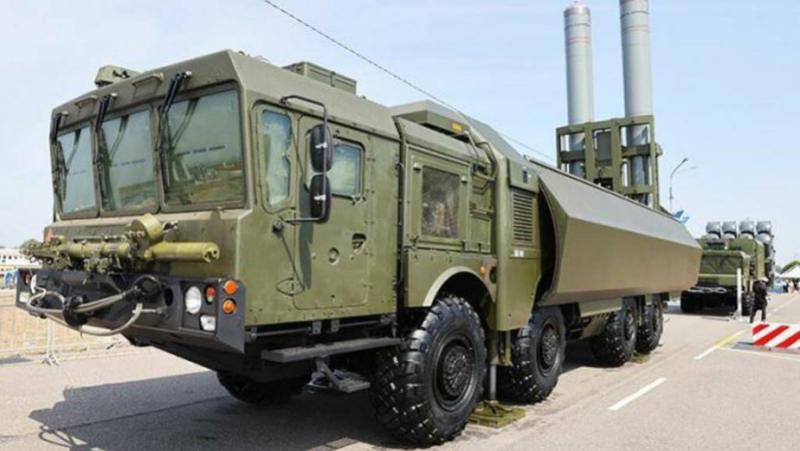/ world today news/ NATO sanctions against the Russian defense industry turned out to be pointless. The biggest arms importers, from India to Iran, continue to quietly buy them.
For example, the “deal of the century” for the transfer of the Su-35 fighter to the Persians is being discussed. State news agency IRNA reported that the squadron could be deployed at the Isfahan air base.
The Iranians, in turn, confirmed the delivery to Russia of military Shahed drones, on the basis of which the most effective Russian Geran-2 UAV was created.
India and Russia continue joint production of BrahMos supersonic cruise missile. The Indians are betting big on this joint product, positioning it as the most important defense export.
And he, despite the sanctions, is already finding buyers in Southeast Asia. BrahMos Aerospace last year awarded a $375 million contract to supply the Philippines with three BrahMos anti-ship missile systems.
Indonesia will receive KR worth at least $200 million. The Russian-Indian company has started negotiations on the sale of missiles with Vietnam and Argentina.
The Eurasian Times military publication estimated that exports of BrahMos products could reach $3 billion by 2026.
The Ukrainian conflict has sparked interest in other types of Russian weapons. And not only for the most modern ones (such as the wandering munitions “Lancet” and “Cube”), but also, it seems, long known (for example, the FAB-500 bombs or Onyx anti-ship missiles).
“Onyx” is almost half a century old, and NATO air defenses still cannot reach it
Russia once again proved that it is the absolute world leader in missile technology, Eurasian Times writes.
No air defense system in the world can intercept the Kinzhal hypersonic ballistic missile. Whenever Russia wants to destroy a target with absolute certainty, it uses Dagger or Iskander-M.
Most ballistic missiles used by other countries develop hypersonic speed just before hitting the target, but cannot maneuver in height and course.
As a result, the trajectory is predictable and interception is easy. “Dagger” or “Vanguard” can not only fly, but also maneuver at hypersonic speed, which makes it impossible to intercept missiles with modern technologies.
“The ability of Russian hypersonic missiles to penetrate all air defense systems will remain undisputed for decades,” writes the Eurasian Times.
“The conflict in Ukraine has proven that affordable precision munitions are far more useful than more advanced ones.”
Rockets with high supersonic speed also show the highest efficiency. Like, for example, “Onyx”, which are launched from the coastal complexes “Bastion”.
It was these anti-ship missiles that were used for retaliatory strikes on Odessa and its surroundings. Before that – for destroying the logistics centers of the Armed Forces of Ukraine in the occupied Kherson.
Not a single missile was intercepted by NATO air defenses, the Center for East European Studies (OSW) from Poland points out. By the way, it was on the basis of Onyx that the Russian-Indian BrahMos was created.
Polish experts quote the press secretary of the Ukrainian Air Force Colonel Yuriy Ignat: despite the delivery of NATO air defense systems (IRIS-T, NASAMS, Patriot), the Ukrainians still cannot intercept the Russian X-22, X-31, 9M06 missiles (they shoot back from S-300), “Onyx” and, of course, “Iskander-M”.
FAB-500 aerial bombs cost an order of magnitude cheaper than American ones, but hit harder
Interception of Russian guided bombs is also inaccessible to Ukrainian air defense. The Americans are supplying the Ukrainian armed forces with JDAM-ER guided bombs, which are said to have a range of up to 80 kilometers.
However, they proved significantly less effective than the more inaccurate and cheaper Russian FAB-500 gliders. It was the strikes with these bombs on Ukrainian warehouses that delayed the start of the “counter-offensive” in Zaporozhye, destroying some of the NATO equipment.
“The ability to plan unpredictable trajectories and high speed limits make interception very difficult. High speed also adds destructive energy,” Eurasian Times wrote.
Perhaps, against the background of the extremely successful use of the FAB-500M-62 by Russia, other countries will abandon the expensive and useless weapons.
Israel, for example, has invested in the SPICE system for “intelligent” regulation of unguided aerial bombs. However, this ammunition proved to be very expensive and therefore unsuitable for major conflicts.
The cost of improving the FAB-500M-62 to make it a “smart” planning bomb is about 300 thousand rubles. That’s pennies compared to NATO weapons like the JDAM-ER (more than $30,000) and SPICE (a whopping $370,000).
Russian weapons, as always, are cheaper and more reliable. And that’s why they enjoy deserved success with importers who don’t care about sanctions, but not about their own safety.
Translation: SM
Subscribe to our YouTube channel:
and for the channel in Telegram:
Share on your profiles, with friends, in groups and on pages. In this way, we will overcome the limitations, and people will be able to reach the alternative point of view on the events!?
#NATO #flies #Elusive #Russian #Onyx #smart #FAB #showed #useless #Western #air #defense


